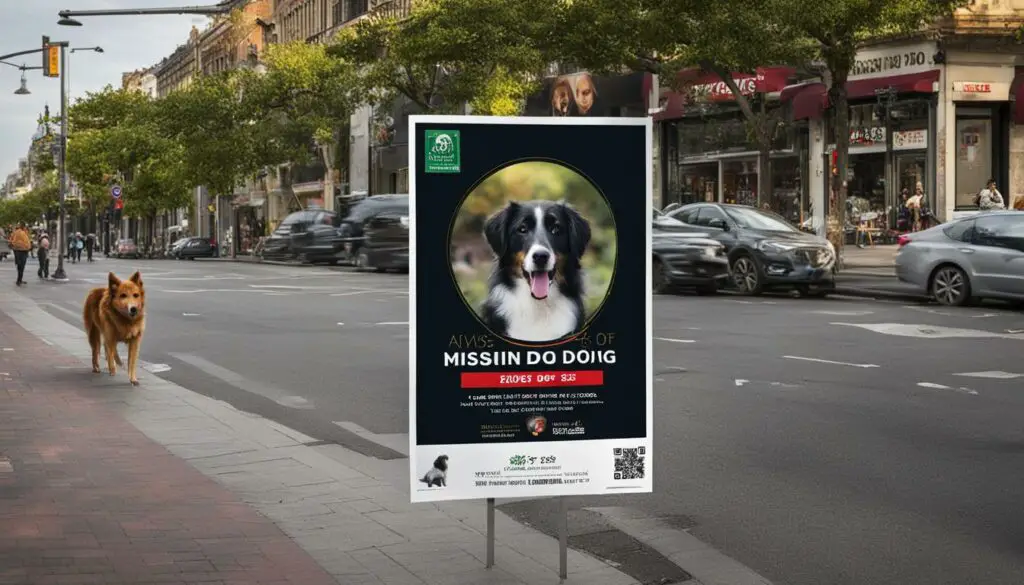According to the National Council on Pet Population Study and Policy, less than 2% of lost cats and less than 20% of lost dogs are returned to their owners. Designing an effective lost dog poster can greatly increase the chances of finding your furry friend. This guide will provide you with tips and insights to create a compelling lost dog poster that will catch people’s attention and help bring your beloved pet home.
Key Takeaways:
- Creating a clear and eye-catching design is essential for a lost dog poster.
- Include specific details about your pet, such as breed, color, and sex.
- Place your posters strategically in high-visibility areas.
- Make multiple copies of your poster for wider distribution.
- Stay hopeful and persistent in your search efforts.
The Importance of a Clear and Eye-Catching Poster Design
When it comes to creating a lost dog poster, the design plays a crucial role in grabbing people’s attention and increasing the chances of finding your furry friend. A clear and eye-catching poster design can make all the difference in capturing the interest of potential helpers. Here are some key design elements to consider:
- Choose a bright and eye-catching background color to make your poster stand out.
- Opt for a large poster size, such as 22″ x 28″, to maximize visibility.
- Use bold fonts that clearly state “Help Find,” “Missing Dog,” or “Lost Dog” to convey the urgency of the situation.
- Add specific details about your pet, such as breed, color, and sex, to help people identify them.
- Include a clear and focused photo of your dog that accurately depicts their current appearance. This will assist in recognition.
Remember, the goal is to make your poster visually appealing while conveying the necessary information to catch people’s attention. By following these design tips, you can create a poster that stands out and increases the likelihood of reuniting with your beloved pet.
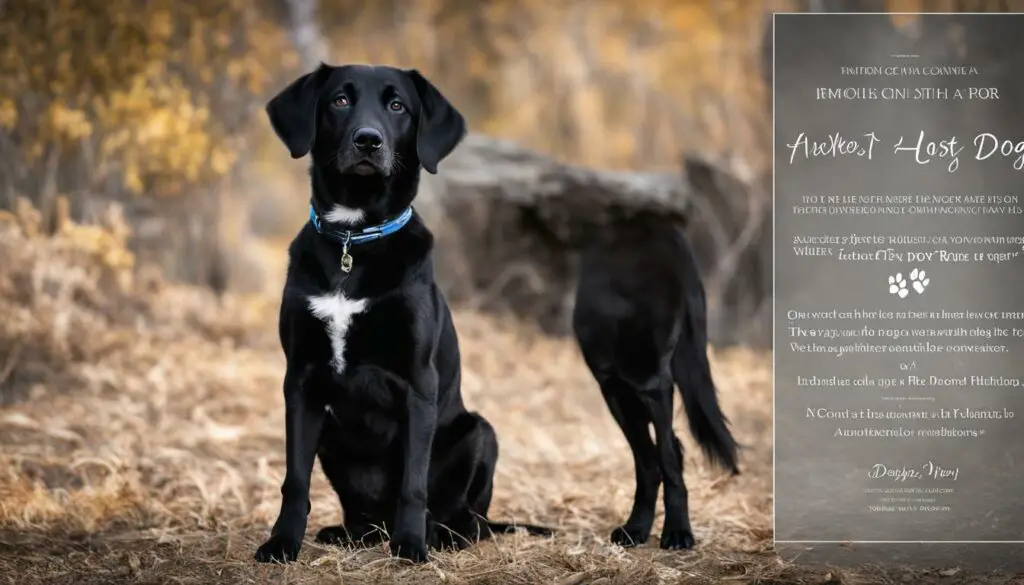
Additional Tips for an Effective Poster Design
Here are a few more tips to enhance the design of your lost dog poster:
- Consider using a template or flyer design specifically created for lost and found pets. These templates often have a professional layout and guidance on where to place key information.
- Keep the poster design simple and clutter-free to ensure that the key details are easily readable from a distance.
- Use high-quality printing and paper to make your poster look professional and stand out against other posters in the area.
- If you’re comfortable with graphic design software, you can create a custom template that reflects your pet’s personality or includes additional information like any medical conditions or unique characteristics.
Remember, the purpose of the poster design is to grab attention and convey the necessary information. By considering these additional tips, you can create a visually appealing and effective lost dog poster that increases the chances of finding your furry companion.
Creating an Effective Description
When creating a description for your lost dog poster, it’s crucial to capture attention and provide key information. Keep your description brief and to the point, using big, bold letters that are easily readable from a distance. Include important visual details such as collar color, distinctive markings, or any other unique features that can help people identify your pet.
Make sure to include your pet’s name in the description, as this can create an emotional connection and increase the chances of someone reaching out with information. Additionally, provide clear and easily accessible contact information for yourself, such as a phone number or email address. This will enable people to quickly get in touch if they have any information about your lost dog.
Remember to choose a font that is simple and easy to read, avoiding overly decorative or intricate styles. The goal is to make it as easy as possible for anyone who sees your poster to understand the information and contact you if they have any relevant details. By creating an effective description, you are maximizing the chances of finding your beloved pet and bringing them home safely.
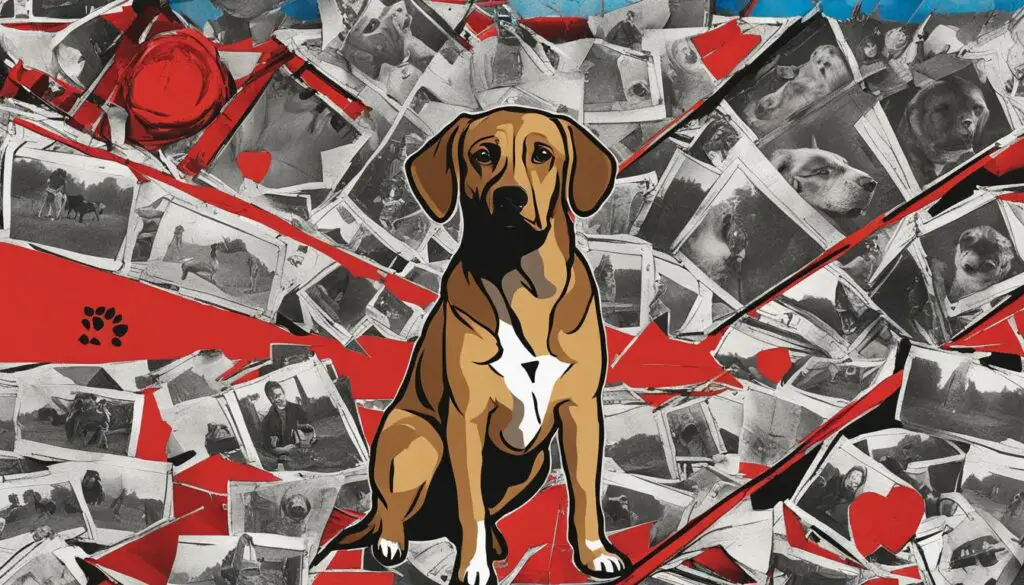
Example of an Effective Description:
“LOST DOG: Max, a friendly and playful Labrador Retriever, went missing on October 10th. He is a golden-colored dog with a white patch on his chest and a blue collar. If you have seen Max or have any information, please call or text 555-1234. We miss him dearly and are offering a reward for his safe return. Thank you for your help!”
Remember to customize your description based on your own dog’s details and add any additional information that may be relevant. Utilize the example above as a guideline for creating a clear and compelling description that can increase the chances of finding your lost dog.
Table: Tips for Creating an Effective Description
| Tip | Description |
|---|---|
| Keep it brief | Use big, bold letters to capture attention and make it easily readable from a distance. |
| Include visual details | Add key visual details such as collar color or distinctive markings to help identify your pet. |
| Include pet’s name | Create an emotional connection by including your pet’s name in the description. |
| Provide clear contact information | Make it easy for people to reach out by providing a phone number or email address. |
| Use a legible font | Choose a simple and easily readable font style to ensure the information is easily understood. |
By following these tips and creating an effective description, you can increase the visibility and impact of your lost dog poster, enhancing the chances of finding your furry friend.
Strategic Placement of Posters
When it comes to finding a lost dog, strategic placement of posters plays a crucial role in increasing the chances of a successful reunion. By choosing the right locations and maximizing visibility, you can help ensure that your lost dog poster catches the attention of as many people as possible.
One important aspect of strategic placement is selecting high-traffic areas within a 1-3 mile radius of where your pet went missing. Focus on major intersections, where people are more likely to stop and take notice. These busy spots provide maximum exposure to potential sightings and help spread the word about your lost dog.
In addition to major intersections, consider reaching out to homeowners in key areas and asking if you can display larger signs in their yards. This can be particularly effective in residential neighborhoods where people are more likely to be familiar with their surroundings and notice any changes. Fluorescent poster boards can also be a great way to attract attention and ensure that your poster stands out.
Remember, the more exposure your posters get, the higher the chances of someone spotting your lost dog. By strategically placing them in high-visibility locations and utilizing different tactics to capture attention, you can significantly increase the likelihood of being reunited with your furry friend.
| Strategic Placement Tips | Benefits |
|---|---|
| Choose high-traffic areas | Increased visibility and potential sightings |
| Focus on major intersections | Captures the attention of passersby |
| Ask homeowners to display larger signs | Maximizes exposure in residential areas |
| Use fluorescent poster boards | Makes your poster stand out |
The Importance of Sufficient Copies
When it comes to creating a lost dog flyer, it’s essential to have a sufficient number of copies on hand. The more flyers you distribute, the wider your reach and the higher the chances of someone spotting your lost pet. It’s always better to have more copies than you think you’ll need, so be prepared and print at least 150-200 copies for wide distribution.
To maximize the effectiveness of your flyers, it’s crucial to hand them out to as many people as possible. Start by distributing flyers to your neighbors, local businesses, and dog walkers. Don’t hesitate to ask friends, family, and community members to help spread the word. The more people who have your flyer, the more eyes will be on the lookout for your lost dog.
Remember to include clear contact information on your flyers, such as your name, phone number, and email address. You want to make it easy for anyone with information to reach out to you. Additionally, consider offering a reward for the safe return of your dog. This can be a powerful incentive for people to actively search and share your flyer.
The Importance of Sufficient Copies
Creating a lost dog flyer is just one part of the search effort. The key to success lies in distributing a sufficient number of copies to reach a wide audience. By printing enough copies and getting them into the hands of as many people as possible, you greatly increase the chances of finding your beloved pet. Keep spreading the word, remain hopeful, and never give up until you’re joyfully reunited with your furry friend.
| Benefits of Sufficient Copies | Tips for Wide Distribution |
|---|---|
| Increased visibility | Hand out flyers to neighbors, local businesses, and dog walkers |
| More eyes on the lookout | Ask friends, family, and community members for help |
| Easier contact with potential leads | Include clear contact information on your flyers |
| Potential for reward-driven search | Consider offering a reward for the safe return of your dog |
Preparing in Advance for Future Emergencies
As a pet owner, it’s always wise to be prepared for unexpected situations, including the possibility of your dog going missing. By taking proactive steps and creating a lost dog poster template in advance, you can save valuable time and increase the chances of finding your furry friend.
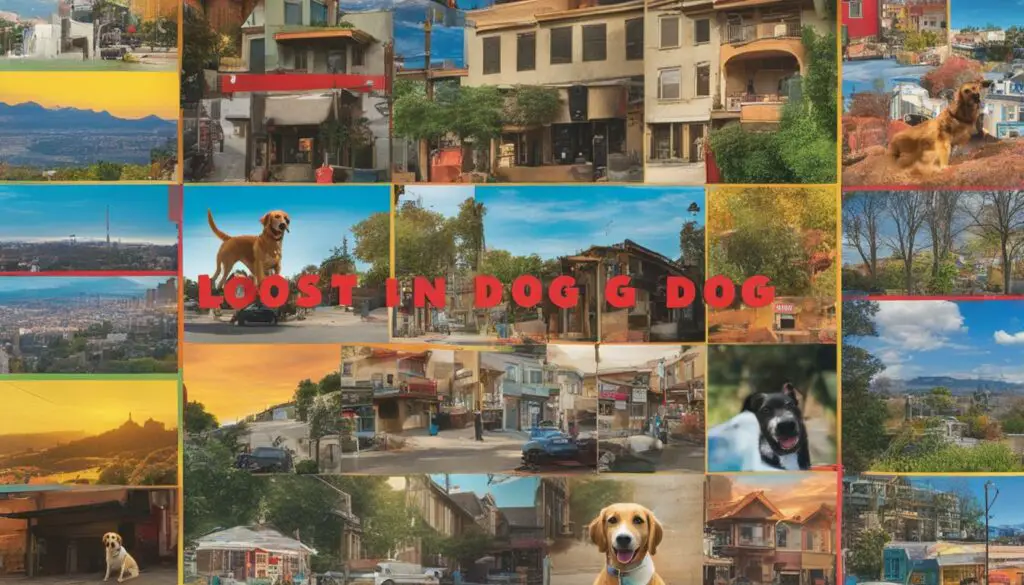
Having a template ready allows you to quickly add specific details about your dog, such as their breed, color, and any distinctive markings. By keeping multiple copies of the template in different locations, along with a flash drive containing the design, you’ll be ready to take action immediately if your dog goes missing.
In addition to the template, make sure to have sturdy tape and a staple gun on hand. This will allow you to easily affix the posters to telephone poles, community boards, and other high-visibility areas during your search. By being prepared in advance, you can focus on the search for your lost pet without the added stress of creating a poster from scratch.
Maintaining Hope and Persistence
When searching for a lost pet, it’s easy to become discouraged and lose hope. However, it’s important to maintain a positive mindset and remain persistent in your efforts. Many lost pets are found weeks or even months after they go missing, so don’t give up on the search. Stay proactive and continue spreading the word about your missing pet.
A key strategy in maintaining hope and persistence is staying in touch with local shelters. Check their websites daily for any new arrivals that match the description of your lost pet. Additionally, make regular visits to their kennels in case your pet was picked up and brought in by someone else. By staying engaged with local shelters, you can increase your chances of finding your beloved pet.
Another important step is to keep spreading the word about your missing pet. Utilize social media platforms, such as Facebook and Twitter, to share information and photos of your lost pet. Encourage your friends and followers to share your posts and help spread the message. The more people who are aware of your situation, the higher the chances of someone spotting your pet and reaching out with information.
“Many lost pets are found weeks or even months after they go missing, so don’t give up on the search.”
Lastly, it’s crucial to never lose hope and continue your search efforts. Stay vigilant and respond promptly to any potential sightings or leads. Utilize mapping tools to track your pet’s potential travel pattern and focus your search efforts in those areas. While the search for a lost pet can be challenging, maintaining hope and persistence can ultimately lead to a joyful reunion with your furry friend.
Additional Resources
- American Humane: Lost Pet Prevention and Recovery
- The Humane Society: What to Do if You Lose Your Pet
- American Veterinary Medical Association: Finding a Lost Pet
Tips for Finding a Lost Cat
When your beloved cat goes missing, it can be a distressing and worrisome time. However, with the right strategies and proactive efforts, you can increase the chances of finding your furry friend. Here are some helpful tips to guide you in your search for a lost cat.
1. Start Your Search Immediately
As soon as you realize your cat is missing, it’s crucial to start your search right away. Cats are known for their ability to hide, so begin by thoroughly searching your own property both inside and outside. Check even the smallest and most unlikely places where your cat might be hiding.
2. Utilize Lures and Expand Your Search
One effective way to entice your cat to return is to use a can of wet food or treats. Place them outside your home to create a familiar and enticing scent. You can also expand your search by informing your neighbors and asking for permission to search their properties. It’s not uncommon for cats to wander a 1-3 mile radius, so be sure to broaden your search area.
3. Create Eye-Catching Posters
An eye-catching lost cat poster can be instrumental in spreading the word about your missing pet. Include a clear and recent photo of your cat, along with a brief description of their appearance, including any unique markings or characteristics. Don’t forget to include your contact information so that anyone with information can reach out to you.

4. Leverage Social Media and Community Platforms
In today’s digital age, social media can be a powerful tool in finding a lost cat. Post about your missing cat on local community groups, neighborhood forums, and pet-related pages. Many people are willing to share your post and help spread the word.
By combining these strategies, you can maximize your efforts in finding a lost cat. Remember to remain persistent, stay positive, and never lose hope. With patience and determination, you have a higher chance of being reunited with your cherished feline companion.
Tips for Finding a Lost Dog
When your beloved dog goes missing, it can be a distressing and worrisome time. But don’t lose hope! With the right strategies and actions, you can increase your chances of finding your furry friend. Here are some tips to help you in your search:
1. Search your local area thoroughly
Start by searching your immediate neighborhood and surrounding areas. Dogs that are lost tend to roam within a two to four-mile radius. Walk or drive around, calling your dog’s name and listening for any familiar sounds. Don’t forget to check nearby parks, wooded areas, and even vacant lots. Leave no stone unturned in your search efforts.
2. Utilize the power of posters and flyers
Create a compelling lost dog poster or flyer that includes a clear and recent photo of your dog, along with a brief description of their appearance and any distinctive features. Include your contact information and make sure the text is large and easily readable. Place these posters in highly visible locations within a two to four-mile radius, such as community bulletin boards, grocery stores, and veterinary clinics. Spread the word about your missing dog through social media platforms as well.
3. Engage your community
Reach out to your neighbors, local businesses, and community organizations for support. Ask them to keep an eye out for your dog and share your poster with their networks. Additionally, consider contacting animal shelters, rescue groups, and veterinarians in your area. Provide them with a detailed description of your dog and regularly check their website or visit their facility to see if your dog has been found or turned in.
Remember, finding a lost dog requires patience, persistence, and teamwork. Stay positive, remain actively engaged in your search efforts, and never give up hope. With a strong network of support and the right actions, you’ll increase the chances of being reunited with your furry companion.
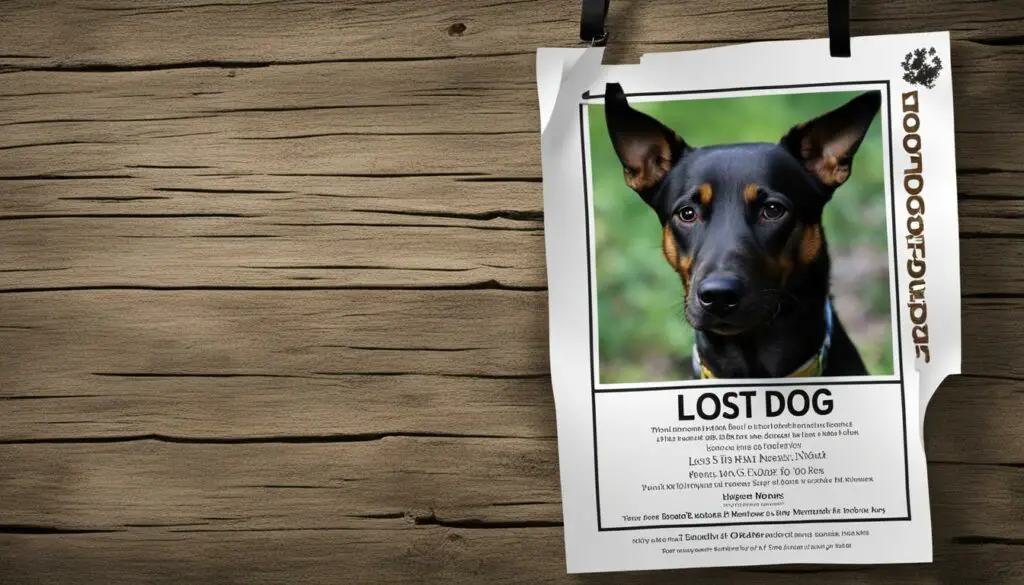
| Helpful Contacts | Contact Information |
|---|---|
| Local Animal Shelters | (555) 123-4567 |
| Rescue Groups | (555) 987-6543 |
| Veterinarians | (555) 456-7890 |
| Community Bulletin Boards | n/a |
Additional Tips and Strategies
When creating a lost and found dog poster, it’s important to consider some additional tips and strategies that can help increase your chances of finding your beloved pet. Here are a few recommendations:
1. Set Humane Traps
If you’ve exhausted other search methods or have received credible information about your dog’s location, consider setting up humane traps. These traps can help capture your dog safely without causing harm. Place the trap in an area where your dog has been sighted or where they may be seeking shelter. Remember to monitor the trap regularly and contact local animal control or a humane society for assistance.
2. Check All Shelters and Veterinary Clinics
Don’t solely rely on your lost dog poster to bring your pet home. Take the time to personally visit and contact all shelters, animal control agencies, and veterinary clinics within your area. Provide them with a detailed description of your dog and leave them with a copy of your poster. Check their websites and social media pages regularly to see if any dogs matching your pet’s description have been found or brought in.
3. Contact the Microchip Company
If your lost dog is microchipped, make sure to contact the microchip company as soon as possible. Provide them with the necessary information and ask if any scans have been performed or if any updates have been made to your pet’s microchip data. This can help you identify if your dog has been found or scanned by a shelter, veterinarian, or good Samaritan.
4. Don’t Give Up Too Soon
Remember, finding a lost dog can take time and patience. Don’t give up too soon or lose hope. Continue spreading the word about your missing dog through social media, local community boards, and word of mouth. Stay proactive in your search efforts, explore every possible avenue, and remain open to any leads or sightings that may come your way. With perseverance, there’s always a chance of being reunited with your furry friend.
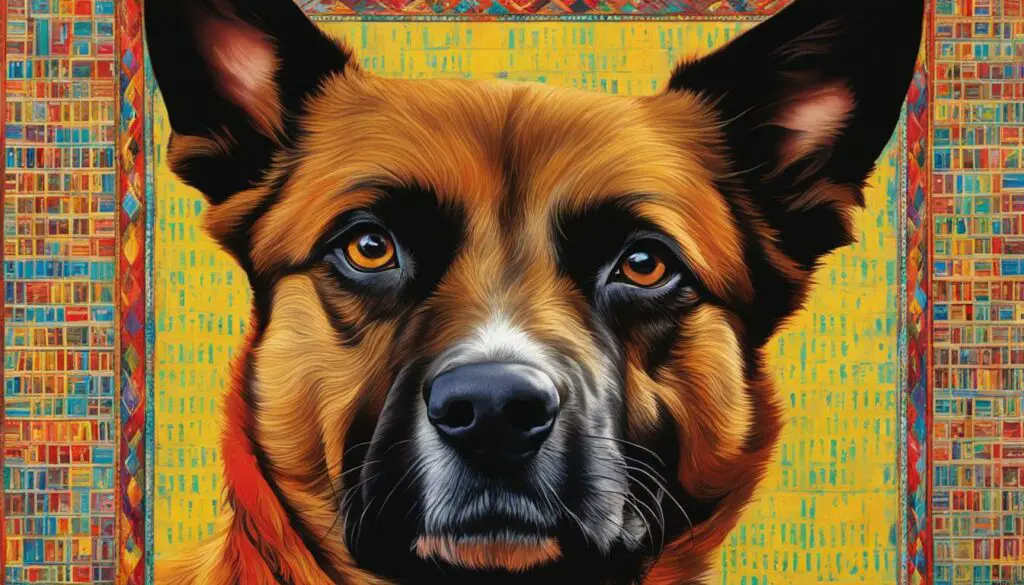
Conclusion
Creating an effective lost dog poster is essential in increasing the chances of finding your beloved pet. By following the tips and strategies outlined in this guide, you can design a visually appealing and informative poster that will catch people’s attention and help bring your lost dog home.
Remember to remain hopeful, persistent, and proactive in your search efforts. Don’t give up until you’re reunited with your furry friend. Keep spreading the word by distributing your well-designed lost pet flyers in prominent locations and utilizing social media platforms.
Continue to stay in touch with local shelters, check their websites daily, and visit their kennels regularly. Explore every possible avenue, from setting humane traps to contacting the microchip company if your pet is chipped. Remember, timing and visibility are crucial, so be prompt in responding to any sighting calls or tips.
Never underestimate the power of community support. Rally friends, family, neighbors, and even strangers to join your search team. Together, you can cover more ground and increase the chances of bringing your lost dog back home. And always remember, even though the search may be challenging, stay positive and keep the hope alive!
FAQ
What size should my lost dog poster be?
Consider using a large poster size, such as 22″ x 28″.
What information should I include in my lost dog poster?
Include specific details about your pet, such as breed, color, and sex. Add a clear and focused photo of your dog that accurately depicts their current appearance, as well as your pet’s name and clear contact information for yourself.
Where should I place my lost dog posters?
Strategically place posters in high-visibility locations within a 1-3 mile radius of where your pet went missing. Focus on major intersections and consider asking homeowners in key areas if you can display larger signs in their yards.
How many copies of my lost dog flyer should I make?
Print at least 150-200 copies to ensure wide distribution. Hand out flyers to neighbors, dog walkers, and anyone willing to help.
How can I be prepared for future emergencies?
Create a lost dog poster template in advance, keep multiple copies in different locations, along with a flash drive containing the design, sturdy tape, and a staple gun.
What should I do if my lost dog is not immediately found?
Maintain hope and persistence. Stay in touch with local shelters, check their websites daily, and visit their kennels regularly. Keep spreading the word and never give up hope of finding your beloved pet.
What should I do if my cat goes missing?
Start your search immediately, use treats or food to lure them back, and search thoroughly around your property. Expand your search within a 1-3 mile radius, post eye-catching posters, and utilize social media platforms to spread the word.
What should I do if my dog goes missing?
Search your area thoroughly, place food, water, and familiar scents outside to attract your dog back home. Post flyers and posters in a 2-4 mile radius and deliver them to local businesses, law enforcement, and veterinarians. Stay vigilant and respond promptly to any sighting calls.
Any additional tips for finding a lost pet?
Set humane traps, check all shelters within your area, contact the microchip company if your pet is chipped, and don’t give up too soon. Explore every possible avenue and remain proactive in your search efforts.

